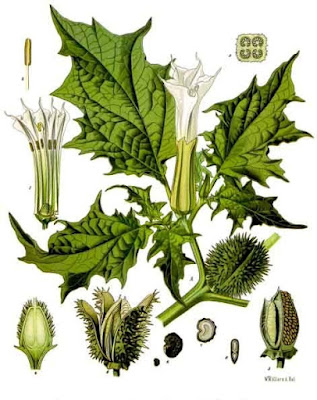We already mentioned how plants of economic interest travelled from the New to the Old World in the Early Modern period, spreading through Europe and beyond. In his rutter of Brazil of 1587, Gabriel Soares de Sousa describes two species native to central America, the Indian fig or prickly pear (figueira da India), Opuntia ficus-indica, and Hell’s fig (figueira do inferno) or thornapple, Datura stramonium, which arrived in Portugal onboard transoceanic vessels.
“Monduruqu is neither more nor less than a fig tree that is planted in the gardens of Portugal, which has succulent leaves and that they call the fig tree of India. These have the leaves of a span of length and four fingers width, and a stalk, and the leaves are born on the tips of the others which are all full of thorns as big and hard as needles, and as sharp as they are, and bear fruit on the tips and sides of the leaves that are figs as big as the lampo figs, red on the outside with a thick peel that you don’t eat. It has thousands of white and black kernels, pure white, and black as jet, the flavor of which is very appetizing and fresh and which is created in the areas along the sea.”
“This herb gives the fruit in bunches full of berries big like hazelnuts all full of beaks, each of these berries has inside a brown grain like a bean, that if mashed unravels producing an oil that is used in candles, and drunk it serves as much as a purge of golden shower, and drunk by colic patients this oil cures their accident soon, the leaves of this herb are very good to relieve wounds, and abscesses.”
Of particular interest is how quickly an exotic plant like the Indian fig became commonly planted in Portuguese gardens, considering that less than a century had passed between Columbus’ voyage and the production of Soares de Sousa’s rutter. While Opuntia was consumed as food, Datura was used in traditional medicine and recreationally due to the high level of alkaloids as atropine in all parts of the plant.
Like many other changes brought by the oceanic navigation, the introduction of these two species had a long-lasting and profound impact on the old continent—these two species are considered invasive weeds in temperate climates across the world. Climatic conditions in the Mediterranean Basin were so favorable for the Indian fig that it has become naturalized, becoming part of the vegetation of regions like Southern Italy. [Silvana Munzi & Luana Giurgevich]





No comments:
Post a Comment